🪴 Planting Your Digital Garden
A digital garden is an online space at the intersection of a notebook and a blog, where digital gardeners share seeds of thoughts to be cultivated in public. Contrary to a blog, where articles and essays have a publication date and start decaying as soon as they are published, a digital garden is evergreen: digital gardeners keep on editing and refining their notes.
Principles
1. Topography over Timelines
Gardens are organized around contextual relationships and associative links; the concepts and themes within each note determine how it’s connected to others.
Posts are connected to other by posts through related themes, topics, and shared context
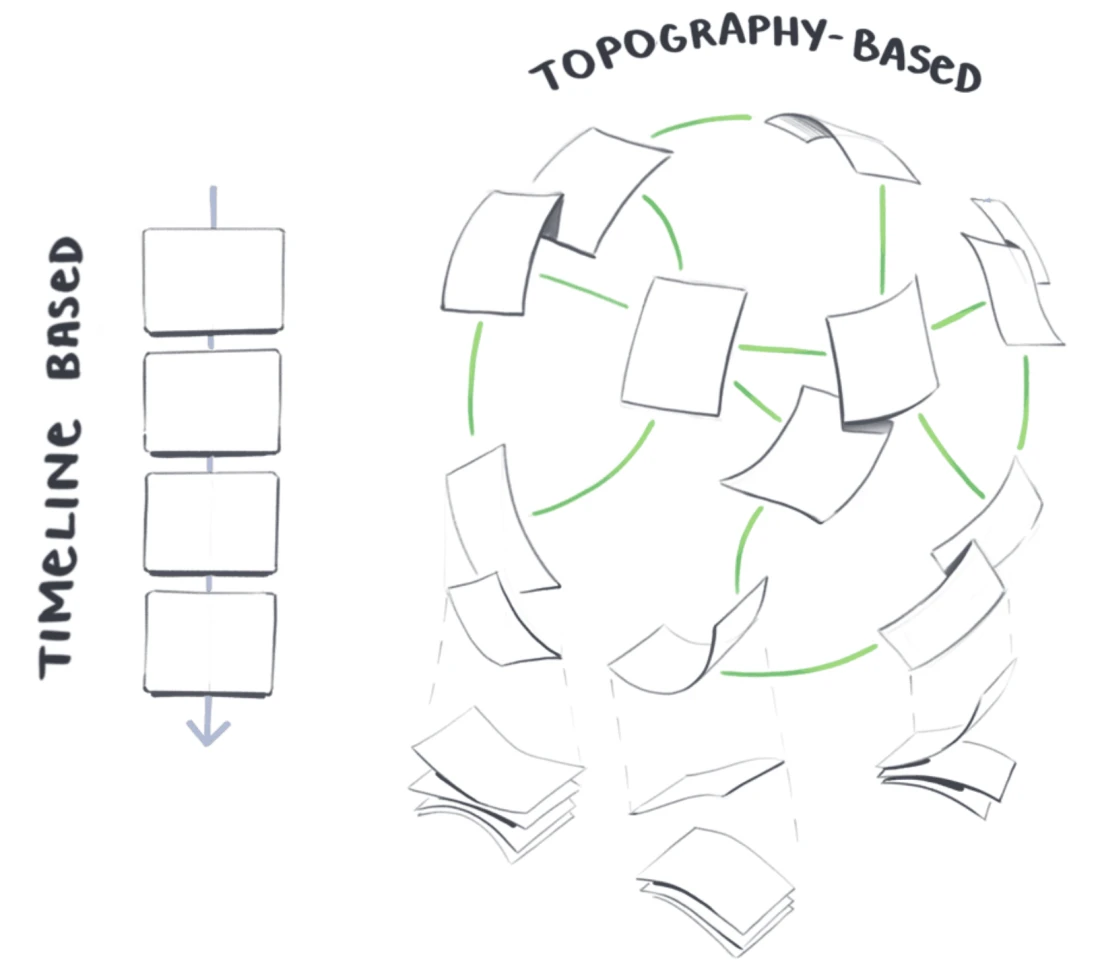
2. Continuous Growth
Gardens are never finished, they’re constantly growing, evolving, and changing. Just like a real soil, carrot, and cabbage garden.
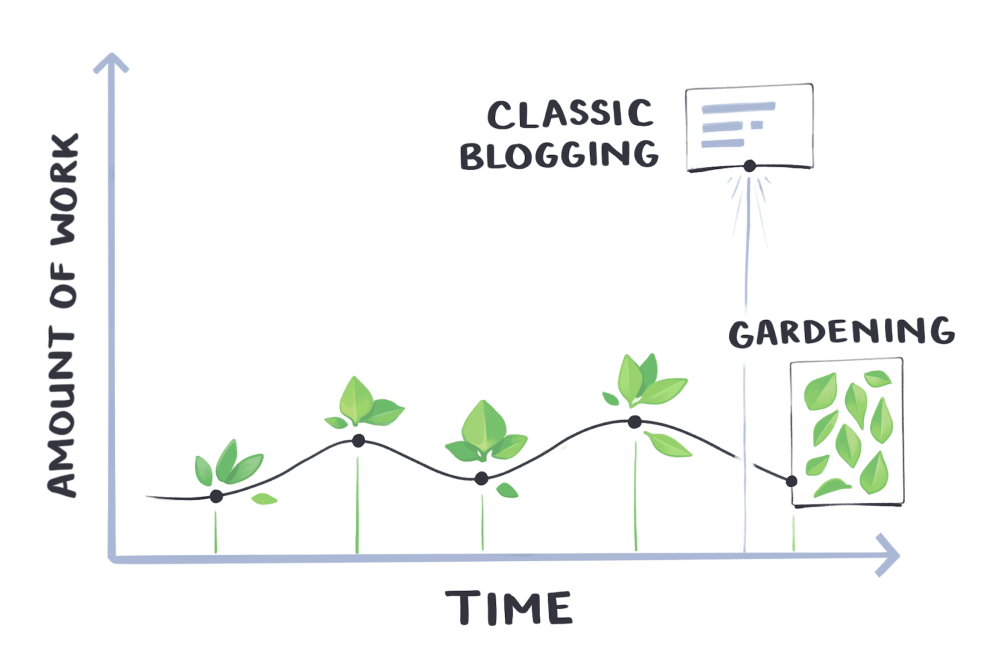
The process of researching and refining happens on the open internet. You post ideas while they’re still “seedlings,” and tend them regularly until they’re fully grown, respectable opinions.
- You’re freed from the pressure to get everything right immediately.
- It’s low friction.
- It gives readers an insight into your writing and thinking process.
Gardens make their imperfection known to readers.
3. Imperfection & Learning in Public
Gardens are imperfect by design. They don’t hide their rough edges or claim to be a permanent source of truth.
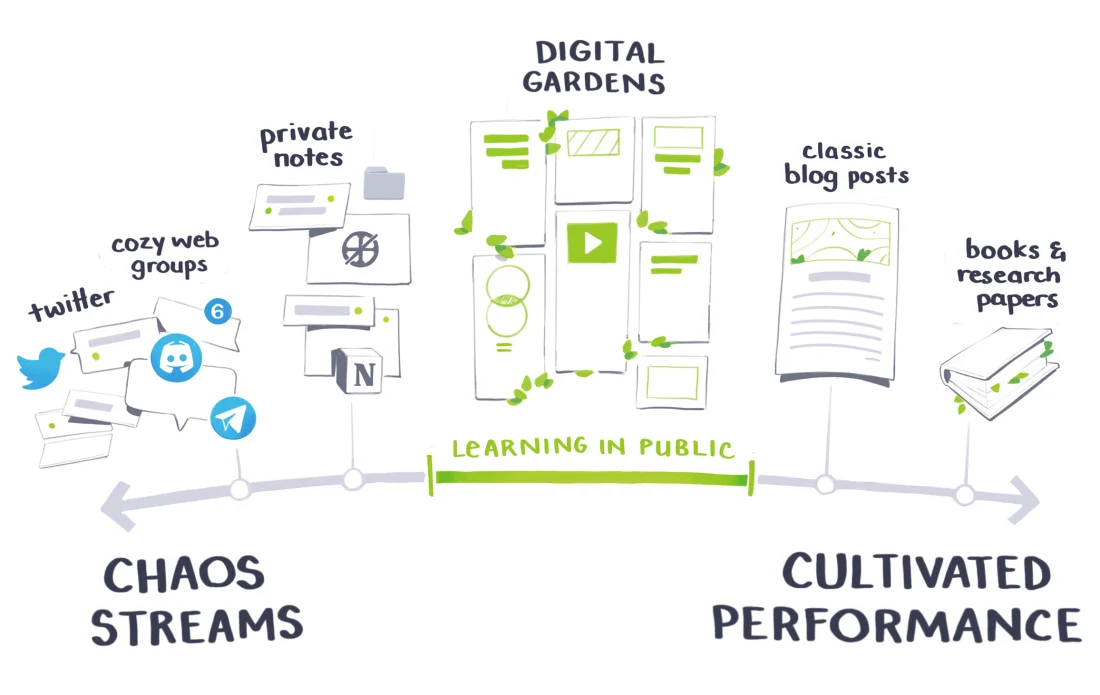 Gardening sits in the middle. It’s the perfect balance of chaos and cultivation.
Gardening sits in the middle. It’s the perfect balance of chaos and cultivation.
Just sharing what you learn as you’re learning it, not a decade later once you’re an “expert” - Learning in Public
Publishing imperfect and early ideas requires that we make the status of our notes clear to readers. You should include some indicator of how “done” they are, and how much effort you’ve invested in them.
- 🌱 Seedlings for very rough and early ideas
- 🌿 Budding for work I’ve cleaned up and clarified
- 🌳 Evergreen for work that is reasonably complete (though I still tend these over time).
4. Playful, Personal, and Experimental
Gardens are non-homogenous by nature. The point of a garden is that it’s a personal playspace. You organize the garden around the ideas and mediums that match your way of thinking, rather than off someone else’s standardised template.
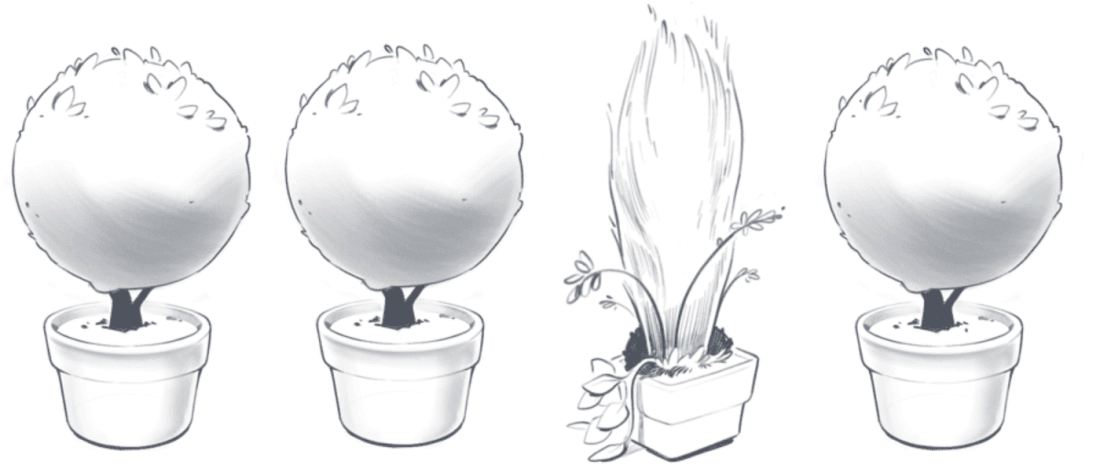 One goal of these hyper-personalised gardens is deep contextualisation.
One goal of these hyper-personalised gardens is deep contextualisation.
5. Intercropping & Content Diversity
 Gardens are not just a collection of interlinked words.
Historically, monocropping has been the quickest route to starvation, pests, and famine. Don’t be a lumper potato farmer while everyone else is sustainably intercropping.
Gardens are not just a collection of interlinked words.
Historically, monocropping has been the quickest route to starvation, pests, and famine. Don’t be a lumper potato farmer while everyone else is sustainably intercropping.
6. Independent Ownership
Gardening is about claiming a small patch of the web for yourself, one you fully own and control.
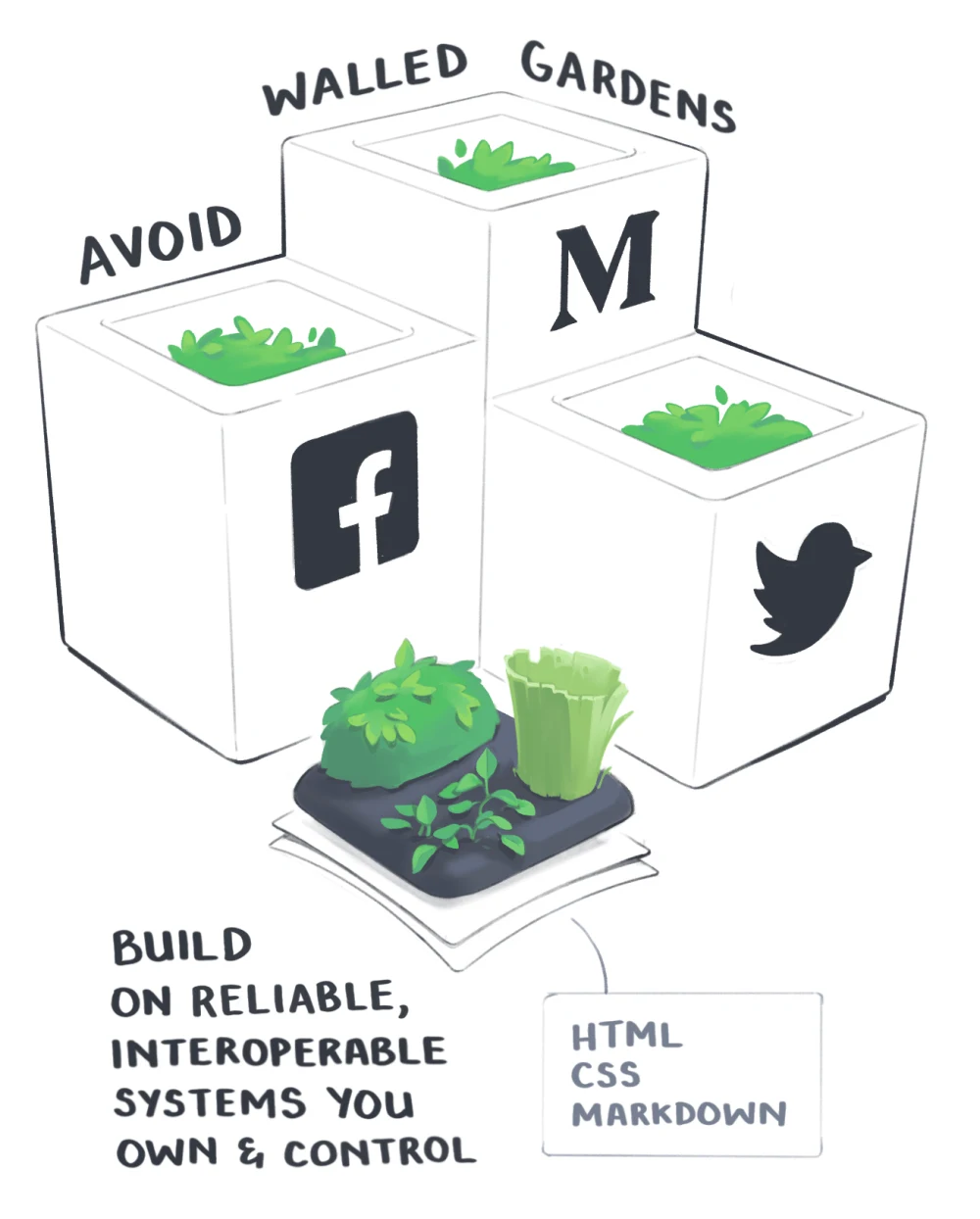 If you give it a bit of forethought, you can build your garden in a way that makes it easy to transfer and adapt. Keeping your garden on the open web also sets you up to take part in the future of gardening. At the moment our gardens are rather solo affairs.
If you give it a bit of forethought, you can build your garden in a way that makes it easy to transfer and adapt. Keeping your garden on the open web also sets you up to take part in the future of gardening. At the moment our gardens are rather solo affairs.
simplify your life and make it easier for you to accomplish your tasks in less time, with less stress.
Gardening Tools
- Obsidian Tool
- Johnny Decimal System
- Zettelkasten Method
- The PARA Method
- Active Recall and Spaced Repetition
Links
- MaggieAppleton/digital-garden ⭐⭐⭐⭐⭐
- How to build a personal knowledge management system: the ultimate guide
- Planting Your Digital Garden
- How to set up your own digital garden
- A Brief History & Ethos of the Digital Garden
- Theory, Philosophy and Navel-Gazing
- Obsidian, cây vấn đề, hệ thống quản lý công việc, và nỗi sợ chết
- https://github.com/KasperZutterman/Second-Brain